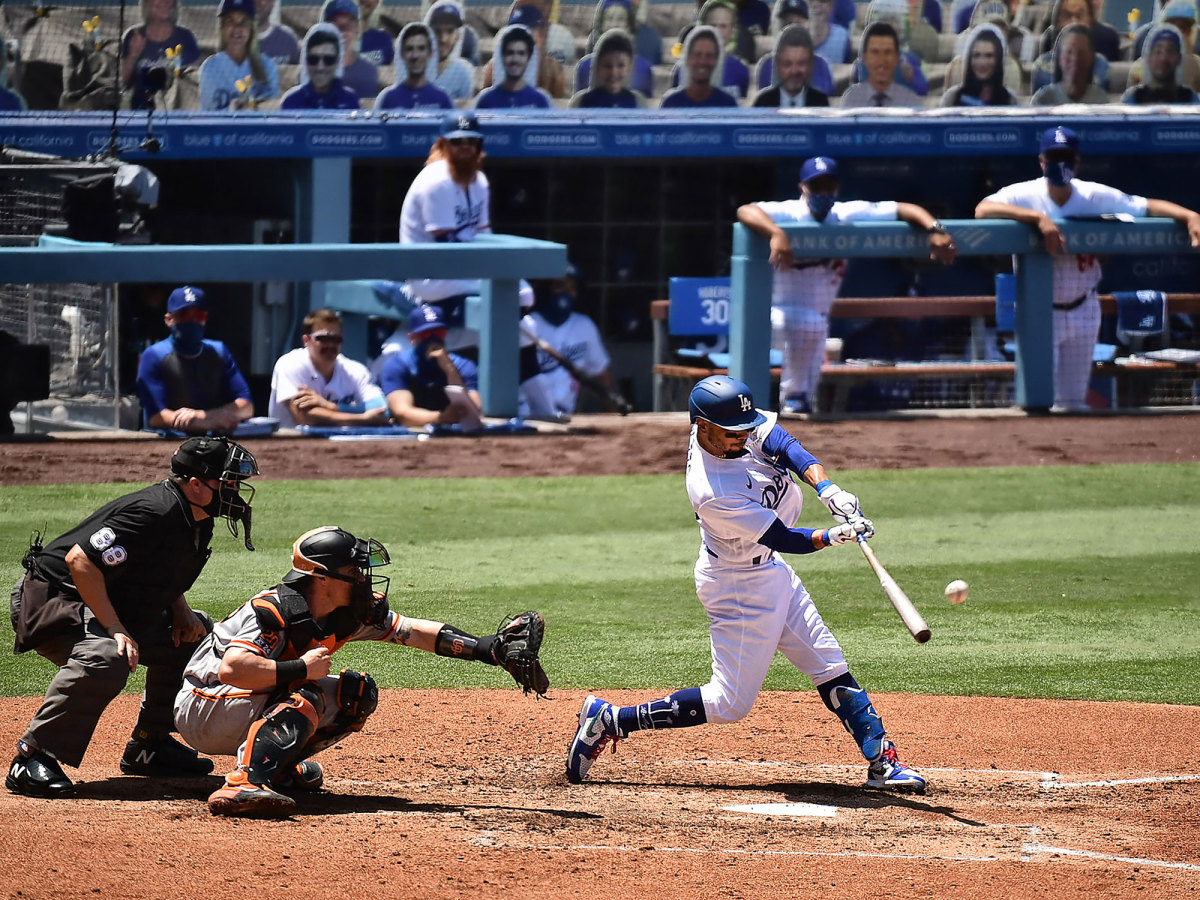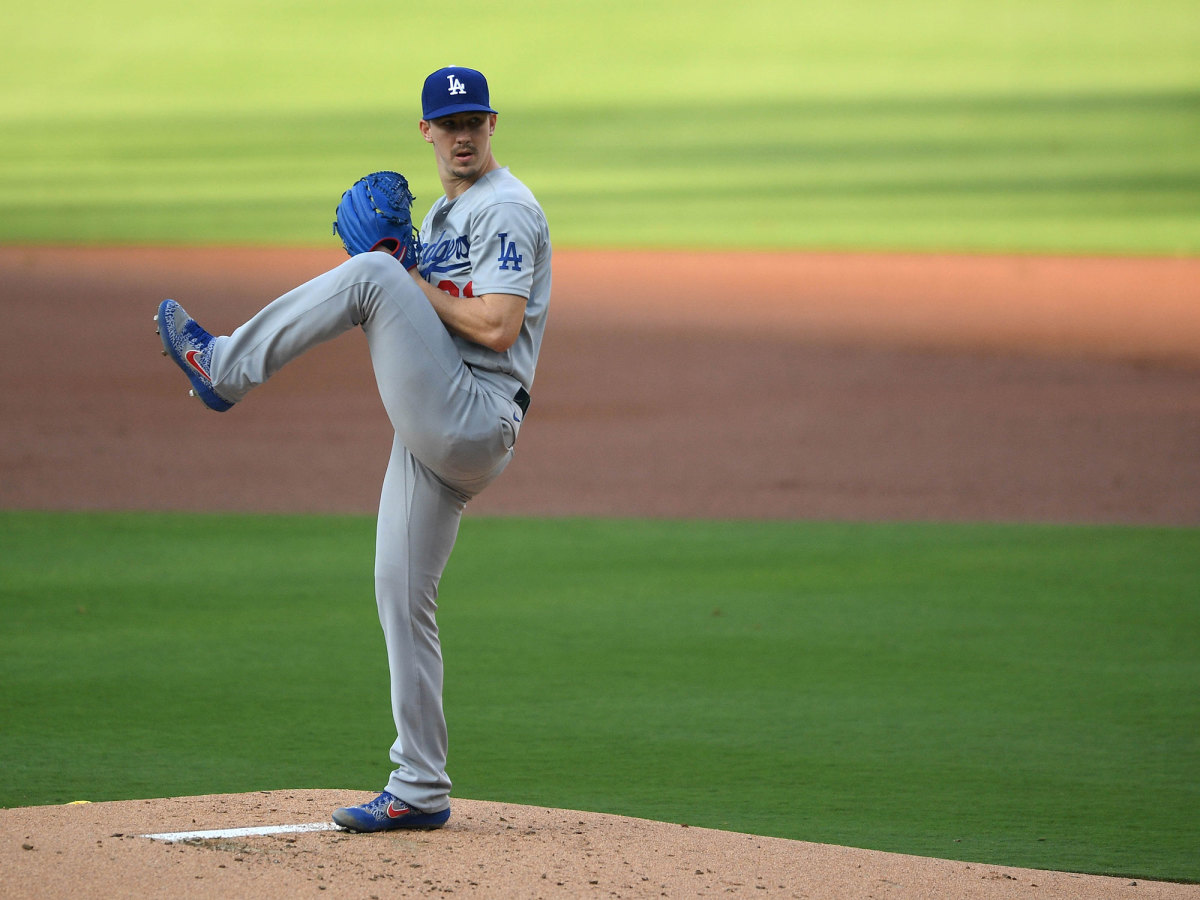Beat L.A.? In Short Season, Dodgers Look Like a Superteam
The Dodgers or the field?
Are the Dodgers so good halfway through this ad hoc season in which we thought anything could happen that we should start thinking in terms of 1 vs. 29? To turn the famed sports road exhortation into the key question of this baseball season: Can anybody beat L.A.?
We know it’s not the Rockies, who are now 3–24 in their past 27 tries against Los Angeles. The Dodgers summarily dismissed Colorado in a three-game weekend sweep, outscoring the Rockies 20–7. Thirty games in, having added Mookie Betts and the designated hitter to what was a 106-win team, the Dodgers are even better than advertised. They are exactly what baseball needs: a superteam.
Superteams are good for sports. We want greatness, so that in the end we can see it either confirmed or destroyed. The Dodgers are on that kind of pedestal.
Because we have only 60 games to judge a team, it is time to start measuring the Dodgers in historical terms. They lead the major leagues in runs scored and ERA. Only four other superteams did that: the 1917 White Sox, the 1927 Yankees, the 1944 Cardinals–all World Series champions–and the 2001 Mariners, who watched their record 116 regular-season wins circle the drain of irrelevance with an ALCS loss to the Yankees.
The Dodgers are not just beating teams. They are destroying them. They are 22–8 with a run differential of +79. Only the champion 1955 Brooklyn Dodgers (25–5, +80) reached those thresholds after 30 games in franchise history. No team this season is close to their run differential. (The Twins are second at +40.)
They have the best bullpen in baseball, a rotation headed by Walker Buehler, Clayton Kershaw, Jose Urías and Dustin May (combined 7-2), an elite defense that shifts better than anybody else (only the Cardinals, who have played just 17 games, are better at turning batted balls into outs), and an offense that features two MVPs (Mookie Betts and Cody Bellinger), one of the best 1–2 combinations at the top of the lineup (Betts and Corey Seager) and the lowest strikeout rate in the game.
The Dodgers provided the Cliff Notes version to their firepower in an 11–3 win Sunday: They became only the second team to hit seven homers and steal three bases while striking out no more than two times. The other one? As super as superteams get: the 1939 Yankees, the greatest run-differential team ever (+411, helped by a 23–2 win over Philadelphia, the only other game with so many homers and steals and so few strikeouts.)

“We’re trying to run away with this division,” second baseman Enrique Hernandez said after the one for the history books. “That’s step number one to the main goal.”
Los Angeles has hit the most home runs in the majors and struck out the least (on a percentage basis), a downright scary proposition for opponents, especially come October.
“I’ve watched them almost my whole career,” Rockies manager Bud Black said. “I’ve seen the Dodgers forever. So this is a good team. Their bullpen is formidable, Buehler is for real, Kershaw seems to be back, the kid [May] has a good arm. They’ve got a good team.”
An unprecedented 60-game season with 16 playoff spots sparked some creative preseason narratives that halfway in now seem ludicrous.
Anybody can get hot and get in the playoffs. (Have you seen the Pirates play?)
Mike Trout is finally going back to the postseason. (Have you seen the Angels play?)
Hitters will be ahead of pitchers. (The major league batting average, .242, has never been worse since the mound was lowered in 1969.)
The Dodgers’ depth is mitigated by a shorter season. (Turns out that depth, otherwise known as a measurement of talent on hand, plays well in small samples, too.)
The Dodgers are so deep their alternate camp team at USC could compete for the eighth playoff seed. How deep are the Dodgers? Mariana deep. Nietzsche deep. This deep:
• Tony Gonsolin, a pitcher with elite stuff who could make for a good No. 3 starter on most teams, can’t get out of the USC camp even after three scoreless starts with the varsity.
• The Dodgers have given at least five days of rest to their starting pitcher for all 30 games.
• No starting pitcher has thrown more than 96 pitches.
• Relievers are averaging just 16 pitches per appearance, the lowest rate in the majors.
• After speculation about which NL teams have ready-made DHs to best leverage the new league rule (i.e., Yoenis Céspedes of the Mets, Ryan Braun of the Brewers, Howie Kendrick of the Nationals), the Dodgers have the best OPS at DH in the league by running nine different hitters through the spot.
• No player has started more than 10 straight games at any position.
The depth has allowed manager Dave Roberts to manage conservatively. As pitchers such as James Paxton of the Yankees blame the rash of pitching injuries on ramping up too quickly from summer camp to game intensity, Roberts mostly has kept his arms fresh by taking advantage of the team’s depth to slow-play them. The exceptions have been starter Alex Wood and reliever Joe Kelly, who are on the injured list.
“Up to this point it’s worked out great,” Roberts said. “I think it starts with just appreciating that the first month of the season in any season is when most of the injuries happen with pitchers. So we expected that would be especially heightened this year because of the quick ramp-up. Also, knowing your roster is expanded, which it should have been.
“I think it’s about just making sure we didn’t step on our guys too much early. There’s been many times when there are guys down in the bullpen where to win a game in a vacuum we would pitch them, but we have them down regardless. I think in that situation we’ve seen other guys come to the forefront and step up.
“It’s two things: We’ve kept them healthy and their usage. As far as starters, it’s having the depth we always talk about with the Dodgers, to insert Tony Gonsolin to be that sixth starter during a 17-day stretch.
“Our starters are understanding that we’re not stepping on them early and we’re doing it to our benefit collectively and their benefit individually. The buy-in from the starting pitchers has been great. So they know in a 90-pitch exercise there may be more in there but there really is no upside.”

Roberts has hooked May one out from a win. His pitch counts for Kershaw (in order, 81, 85, 91, 96) and Buehler (56, 79, 87, 89, 92) look like spring training progressions. Not coincidentally, Buehler’s average four-seam fastball velocity has climbed from 95.6 mph in his second start to 97.0 in his most recent one.
Betts had the day off Friday. “A spa day” as he called it. (On Sunday he became the first Dodger with two homers and two steals in the same game.) A.J. Pollock did not start Sunday simply because he had played a week straight, even though he was 6-for-11 against Colorado starter Antonio Senzatela.
Let that sink in for a minute: The Dodgers are dominating MLB while systematically resting pitchers and players.
This being baseball in the year of COVID-19, being a superteam does not carry the same weight or rewards as per a usual season. Getting through the postseason is nothing like what the 1927 Yankees faced (they played four games) or even the 2001 Mariners (they squeaked by the 91-win Indians before the 95-win Yankees eliminated them.)
The Dodgers get virtually no greater reward for being the No. 1 seed than does the best second-place team: a best-of-three first round series with all games at home (unless a “bubble” location is adopted, a more likely scenario for Division Series, LCS and World Series). Sure, Los Angeles draws the No. 8 seed and the best second-place finisher gets the No. 5 seed, but how great is the gap between the eight- and five-seeds in a 60-game season, especially if the No. 8 seed has an ace? Imagine the New York Mets as the eighth seed. The Dodgers would be one Jacob deGrom gem away from facing elimination–with no fans in the ballpark to create a true home-field advantage.
Simply because of the COVID-19-shortened season, the Dodgers can’t achieve the same legendary status as the 1927 Yankees and other full-season superteams. But don’t make the mistake of dismissing what it takes to win the World Series this year. It will take rigorous adherence to strict COVID-19 protocols just to keep the roster intact, strategic planning and depth to survive the rash of pitching injuries, more postseason wins than ever before, and surviving little to no home-field advantage in October. At the end of this strange season, somebody will be flying a flag, and no apology will be necessary.
The Dodgers are trying to win their first World Series since 1988. Any team that wins this one will be a legit champion and, because of the challenging if brief nature of this season, a most memorable one. If Los Angeles keeps winning games at this clip, it might also be in its own way historic.
